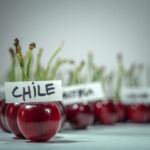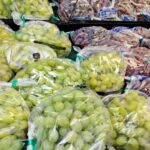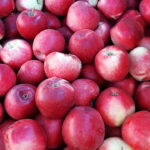‘Best start in four or five years’ for Mexican grapes

A short Chilean season left the U.S. market relatively empty for the first table grapes from Mexico this month, and prices are expected to remain high through June. 
Sun World sales associate Jason Fuller says traders and retailers have been struggling to fill the pipeline to meet demand for the last two or three weeks.
“We’re only now seeing the market come off a little bit, but for the next varieties, nobody figures them to be very heavy in yield,” he says.
“I think this is going to be a pretty strong grape market for most of Mexico, leading well into June.”
Seald Sweet grape commodity manager Chris DeSana says pricing has been higher than usual.
“I think this is probably the best start we’ve seen in the last four or five years, and the reason for that is there was very little fruit from Chile that overlapped into the Mexican season,” he says.
“The harvest is running probably a couple of days ahead in Mexico but there’s no real marketable difference – a couple of days isn’t earth-shattering.
“The big change is that they entered a marketplace that was void of grapes for the most part – there were some Chilean Crimsons being offered and far fewer Thompsons due to the Chilean season wrapping up earlier than past years. In regards to Crimsons, the volumes being offered could not meet the needs of most retail buyers."
The reason why some are expecting lower Mexican grape yields relates to frosts in some parts of the country in February, but depending on the variety and zone the full effects are still uncertain.
“It appears to have adversely affected the vines as far as production. Sugraone production is estimated to be down this year something over 20%,” DeSana says.
“So most sellers have put together pricing through June at substantially higher prices than previous history.
“The key is, will those prices sell through the volume that we do receive? In any commodity if you are too aggressive on the price you can turn a short market into a long market quickly if the fruit doesn’t move,” he says.
 He adds however that retailers seem to be more accepting of the situation, and Seald Sweet will be aggressively promoting fruit through to the week of June 13.
He adds however that retailers seem to be more accepting of the situation, and Seald Sweet will be aggressively promoting fruit through to the week of June 13.
Fuller says Mexican grape supply is expected through to late July, with a much heavier supply of green varieties compared to reds later in the month.
“Around the 25th it’ll kind of dry up and that’s when we’ll start into the San Joaquin [season],” he says.
“On the Coachella side of things it’s not really a similar story – there are better yields than last year, it’s what was anticipated. We’ll see if the packouts go accordingly.
Fuller says a high level of red grape harvesting was expected over the last five days, so the red grape category pricing may soften up a bit.
New varieties, new regions
When asked about the bigger picture, both traders point to a desire in the Mexican sector to produce earlier varieties that could make the most of Chile’s late season window.
But this is sometimes easier said than done.
“I think the Mexicans are going to face the same thing that the Chileans faced, and that is we have to find better varieties in these timing windows,” says Fuller.
“I think the Chileans have realized that just sticking with the same varieties and running the same issues, the retailers are not happy with that, so we’re seeing an explosion of proprietary and new varietal growth, not only from Sun World but others in Chile.
“And you’re going to see the same thing in Mexico. You’re going to see more varieties going in, but the problem with that for Mexico is that there’s always been smaller growers…they don’t have the money to redevelop like some of the bigger guys can,” he says, adding consolidation is likely.
DeSana adds many of the new varieties coming out of breeding programs are often for late harvests rather than early season production, and Mexican growers need to be cautious with which cultivars they put in the ground in order to avoid competing with heavier production areas in California.
“It seems like everybody in the world wants to move away from the Flame, but to replace the Flame you have to find a grape that produces in the same timeframe,” he says.
“If it’s one week later even, it’s a problem. They want to go earlier, not later, and so far they have not been able to find a red seedless grape that produces in that timeframe and/or earlier.”
There are some exceptions though, with DeSana highlighting plantings of early green seedless grapes such as primes and early sweets in new regions that are not historically grape-producing areas.
“Guaymas is one of them. There’s even a new first year of production in a predominantly asparagus-growing region called Obregon.
“In Obregon it’s the first year so it’s yet to be seen, and in Guaymas there are some mixed results. Some are having success and others are struggling with not getting the right production per vine as of yet.
“But people are trying to fill the void, they’re chasing markets, and if they think markets are going to be US$40 for green grapes in late April and early May, they’re going to try and grow them.”
Part of the reason for this drive comes down to one very simple fact – Mexico is within close proximity of the U.S. market
has a much greater geographical and protocol-related advantage compared to the Chilean supply.
“They pick the fruit today, they pack it today, they pre-cool it tonight, it crosses the border in the morning, and any U.S. or Canadian retailer can pick up the fruit within 24 hours of harvest to take it to its final destination,” he says.
New milestones for Sun World
Fuller concludes by adding a couple of breakthroughs for his company in Mexico, including the first production of Midnight Beauty in the Hermosillo, Guaymas area.
“And we’ve had Midnight Beauties in Caborca which is the next region. We also had some organic production of Midnight Beauty and Sable in those areas too, so we’re excited about that,” he says.
“With a few growers we’ve got multiple varieties being tested down there, and one that’s showing great promise right now is Sonera Seedless – it comes off around 7-10 days after Flame.
“It’s a big red seedless grape – every time flames get towards the end there’s always a shortage it seems like, and it’d be nice to have a red grape around that time,” he says, likening the cultivar to a seedless Red Globe.
Photos: Seald Sweet













































